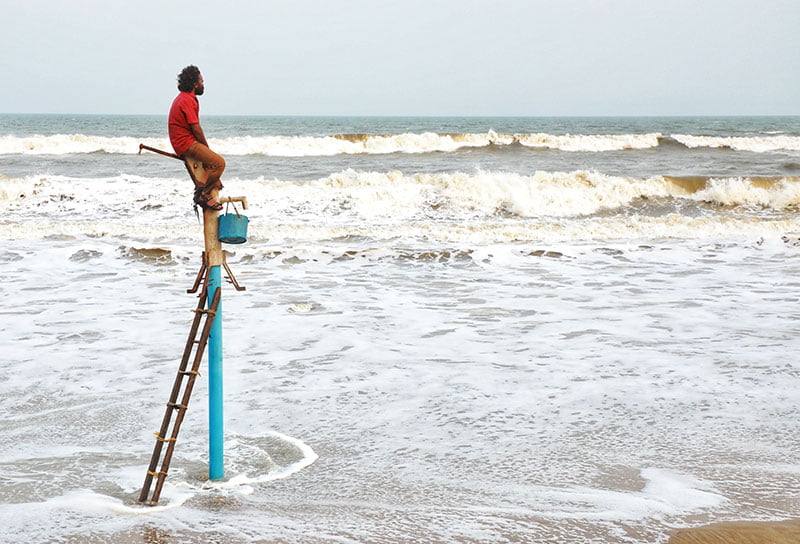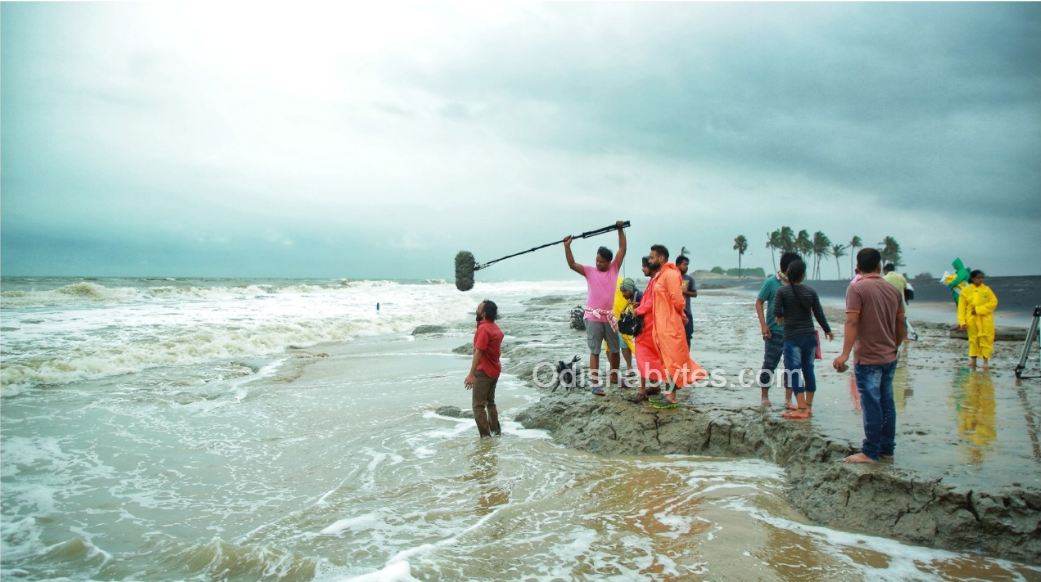Bhubaneswar: After the National Award for Best Feature Film in Odia, Kalira Atita won three honours at the 31st Odisha State Film Awards, which were announced on Friday.
Filmmaker Nila Madhab Panda will be conferred with the coveted Mohan Sundar Dev Goswami Award for this directorial debut of his in Odia. Besides being adjudged the best film, it has won Panda the best director’s award. Kalinga Keshari Nayak has bagged the Best Art Director for Kalira Atita.
Odisha Bytes caught up with Panda to know his journey with this film on climate change, after Kadvi Hawa.
How does it feel to be recognised by your own state?
It feels great to be recognised by the state for your directorial debut in Odia. This is a great moment for me as an artist. The film creates a sense of urgency in terms of climate change. I could have made the movie in Hindi but decided on Odia, as I felt it would have a far-reaching impact if told in the language of the region to which the story belongs.
Besides, there have also been discussions on the difficulties Odia cinema is going through and this film can be considered a step towards a great revival.

How do you pick your subjects?
I have been working on women’s issues, education and global warming-induced climate changes. My films are about keeping abreast of the times. It is basically about how I am feeling at a particular time and what is affecting me. These are the most difficult stories to tell, the story of wind, water. How do you make a fictional film out of these? It has taken a lot from me. I have to put in my head, heart and soul while telling these stories.
How did the idea of Kalira Atita develop?
I came across a newspaper article about a striking yet frightening picture of a lone hand pump sticking out of the sea in 2005. It became a fellowship film, Climate’s First Orphans, with UK High Commission/British Council. While making the documentary, we realised that three and a half of seven villages had already gone under the sea. Since then I kept following the story and in 13 years, all the villages were devoured by the sea. It was then that I decided to do a film to show the emotional impact of climate change as I was myself traumatised on seeing village after village getting consumed by the ferocious sea.

How long did it take you to develop the script for the film?
There was no script. We only had a story, actors and technicians. This is the first film which I made without a script. This was like a Guerrilla film. We developed the script while shooting the film and narrating the story about this man who had lost everything — his world, his loved ones, even his sanity. So, what would happen to him when he suddenly realises that his family is still living there. He goes there and waits for five days for a cyclone. While shooting, I understood the psychology of the man and developed the script with dialogues. This film was shot on the real location without makeup, sets or even lights. The overcast, rumbling skies and a raging sea reflected his inner turmoil and his red shirt was like a red flag, hinting at the danger ahead.
When did you start shooting? Any interesting anecdotes while the film was shot?
It was in June 2018 in the same village, Bagapatia, for 30 days at a stretch. It is the most dangerous place to shoot. We had to cross a crocodile-infested river, and trek a non-motorable stretch of road for 7 km to reach the village and arrange for our stay by putting polythene. There was little communication with the outside world, no electricity. On the first night, we woke up to weird noises and found hundreds of deer and wild boars all around us. We then decided to put up barriers to our camping site.
While shooting the river scene, we were literally chased by the crocodiles. We did not realise it then and were told by the locals later. It could have proved fatal for us.
How did you pick your actor and what idea did he carry with him while playing the part?
When I decided to do the film in Odia, I already had Pitabas Panda in mind. He is one of the finest actors in Odisha. I told him to live with the characters in the village to have a better understanding of their situation. Unfortunately, he became unwell after three days. To keep the shoot going, we would give him hot oil massages every day and someone would carry him on his shoulder to the location. There were long shots, so it was tough.

How do you feel about the film travelling across the world?
Odia films usually do not travel far. Kalira Atita was premiered at IFFI panorama, screened in Prague, Australia, the US and recently in Italy. So, it is creating its own presence.
How has Nila Madhav Panda grown as a filmmaker since I Am Kalam?
I am happy to have created a space for myself without getting distracted by mindless entertainment. I feel I am a responsible filmmaker and it is growing with every film of mine.

Any upcoming projects?
I have been working on an investigative crime thriller, a web series in Hindi for the past two years which will take me another year to complete. I will be definitely working in and around Odisha in future. I have also produced a film, Bishwa, which was shot in Odisha and will be released soon.


